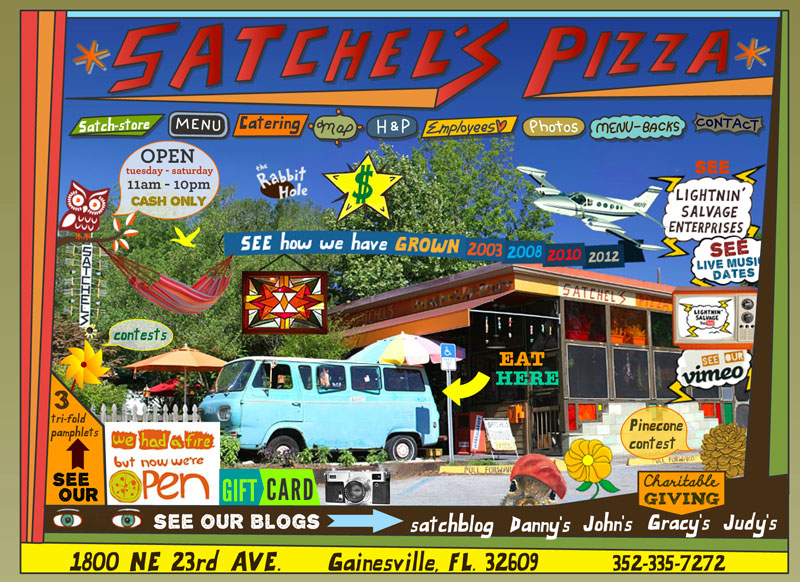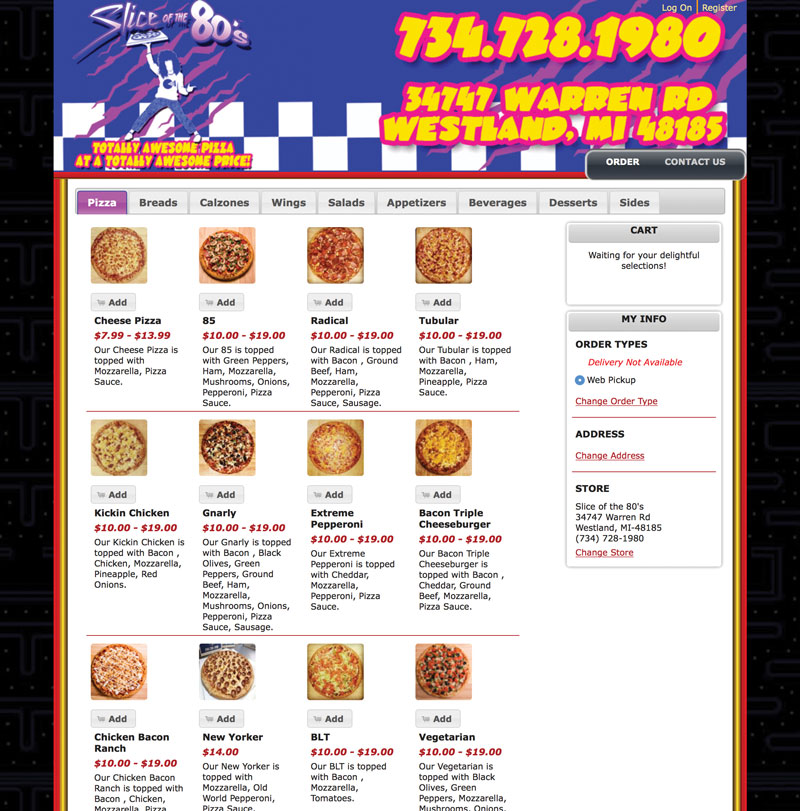What makes a great pizzeria website? Pretty pictures? Easily accessible information and links? A mobile-friendly format? Engaging colors and compelling text? All of the above, say marketing experts, but there’s one more thing to consider. For any pizzeria that offers delivery and/or takeout, online ordering has become a survival prerequisite—many even say it’s the crucial factor for independents competing against the mega-chains.
A quick glance at PMQ’s first-ever “Top 100 Pizzeria Websites” tells the story. “It’s vital that our readers understand there’s a direct correlation between the most popular websites on our PMQ Top 100 list and online ordering,” says PMQ publisher Steve Green, who developed the list with Aaron Harris, the company’s information technology specialist. “There’s a reason why Papa John’s, Pizza Hut and Domino’s are at the top of our list, while Little Caesars, despite having more units, only ranks at No. 9—Little Caesars doesn’t have delivery and online ordering.”
Green conceived the Top 100 list in part because he worries that independents—defined here as an operation with fewer than 10 locations—are dragging their feet on digital ordering and may soon regret it. “Independents have reached a threshold of technology urgency,” he says. “We want to champion online ordering as a marketing best practice, in coordination with an active Web and social media presence. We hope this list and this package of articles will illustrate the power of online marketing for our readers and spur them to action in the very near future.”
Millennials On the Move
At No. 22, Pizza Luce (pizzaluce.com), with eight locations in Minnesota, has PMQ’s top-ranked independent website. What makes it so effective in attracting customers? Well, there’s an eye-catching flatbreads promo on the splash page, a fall specials menu and gorgeous photography throughout. But it starts with online ordering, displayed prominently on the home page. Pizza Luce, selected in 2011 as Minnesota’s Restaurant of the Year by the Minnesota Restaurant Association, saw its delivery sales explode after adding online ordering in May 2010. Within one year, online orders made up 21% of the pizzeria’s delivery sales. The company also added detailed online menu options, including more vegetarian, vegan and gluten-free selections.
So what’s the connection between online ordering and spiking sales? Try two words that begin with M—mobility and millennials. As revealed at the 2015 National Restaurant Association Show in Chicago, about 90% of millennials use tablets and/or smartphones; they aren’t tied to their desktop computers. They also now comprise more than half of the U.S. workforce. And, of course, they order a lot of pizza to go. Their digital mobility plays perfectly into the pizza giants’ strategy and big-budget technology tool kit.
But younger consumers aren’t the only ones using mobile devices. About 60% of consumers ages 45 to 64 use smartphones and tablets, and so do 34% of the 65-and-over crowd. So it’s little wonder that large pizza chains with online ordering saw their share of pizza orders rise from less than 47% between the period of 2009 and 2013 to more than 52% in 2014, according to The NPD Group figures cited in the Wall Street Journal. Meanwhile, the share for independent pizzerias fell from 31.5% to 29% during the same period, and chains with fewer than 100 units saw a drop from 21.7% to 19%.
“For restaurants, and especially pizza restaurants, not having online ordering today is becoming like not having a website five years ago,” says Matt Harper, CEO and co-founder of WebDiner in Fort Lauderdale, Florida. “In the pizza business, featuring online ordering prominently on your website is simply a must.”

Direct Engagement
No one knows that better than Adam Matt, owner of Slice of the 80’s (sliceofthe80s.com) in Westland, Michigan. A former delivery driver, he was 24 when he launched Slice of the 80’s in 2008 and wanted to set his pizzeria apart from competitors. “We were surrounded by pizza chains at our location, so I combined my two passions—1980s memorabilia and quality-ingredient-crafted, fresh pizza—to create an exciting themed restaurant.”
Business was slow at first, despite the shop’s irresistibly fun, 1980s-inspired kitsch—neon-painted graffiti walls, rock hero posters, Rubik’s Cubes and He-Man action figures, plus vintage games like Donkey Kong and Pac-Man. After winning several Detroit-area pizza contests, Matt’s pies began to develop a solid following. So when he decided to augment his marketing efforts with a website, he went all-in. He commissioned a local developer to convey Slice’s loud, colorful 1980s theme in bright, compelling, totally tubular images and links. The home page offers instant access to menu information, merchandise, promotional videos and even a 1980s overview page that allows visitors to play Pac-Man online. Driving his delivery success, Matt says, is the “Order Online Now” button near the top of the home page. “I got tired of paying someone just to answer phones so, two years in, I integrated my entire online and social media system with point-of-sale technology,” he recalls. “With online ordering, the customer acts as his own employee with a digital POS at his fingertips. Customers see the menus in detail on the screen and take on the responsibility themselves to get the order right, which is what younger customers want today.”
 |
|
Slice of the 80’s displays an “Order Online Now” button promptly on its website and gives mobile customers plenty of pizza choices. |
Matt soon saw a big, sustained boost in sales. “Much of the increase came from bigger tickets, because online customers have the time and the information to order exactly what they want,” he says. “I’ve seen average ticket sales over the last few years go from $15 to $21 and now to $25.” Overall, his sales climbed from $300,000 in 2008 to more than $1 million in 2015.
Other pizzerias opt for third-party ordering systems like GrubHub and Eat24. But for Dimo’s Pizza (dimospizza.com) in Chicago, the process was slow, clunky and bad for customer relations, says CEO Dimitri Syrkin-Nikolau. “If a customer was upset, he would often call the provider to complain, and then the provider would in turn call the restaurant. This not only delayed the process of rectifying mistakes with customers, but it also delayed the employee responsible for routing delivery orders, as he had to stay on the phone with a customer representative relaying what the customer said.”
Syrkin-Nikolau hired Web design agency Authentic F&F to build a custom digital POS system with online ordering to solve the problem. Eliminating the middleman gave Dimo’s better control of its ordering system and its reputation with customers, Syrkin-Nikolau notes. “This has allowed us to curate the delivery experience from start to finish,” he says. “The customer deals with us directly and vice versa.”
The upside to using a third-party system is its name recognition and the ability to attract new customers. The downside: Like all middlemen, these companies eat away at your profit margin, charging up to 20% per order, and customers associate their service—for better or worse—with yours.
Exceptions to the Rule
Operators who decline to use online ordering had better make up for it in other ways if they want to drive traffic to their sites. Satchel’s Pizza (satchelspizza.com), a no-delivery, cash-only independent in Gainesville, Florida, operates a kick-butt site without an online ordering component. “We’re a completely different pizzeria, and our website is one of a kind,” says owner Satchel Raye. An accomplished artist and sculptor, Raye developed an eclectic website that mirrors his pizzeria, which is also part junk museum and part amusement park. “We break all the rules in pizzeria operations and website functionality, but we’re as busy as we want to be,” Raye says.
Raye gives guests “an experience, not a quick interaction” through his website. It’s a quirky, cluttered portal of flashing links with content signs touting videos, customer photos, a moving animated train that hyperlinks to the gift shop’s home page, plus charitable giving offers, blogs, and the usual menu, map and contact headers. The mobile version is slimmer and tidier, with a standard interface that includes the full menu, directions, a sliding gallery of photos and a daily calendar for live music. But the site is meant to be experienced on a computer, not a smartphone, Raye admits. “Our website reflects our restaurant’s creative energy,” he says. “We invite viewers to take their time and explore 160 different digital pages. It’s not so much about ordering pizza, but about enjoying a wonderland where you can spend all day and not see everything. That’s why our main page focuses on the desktop user, not mobile customers, which is the opposite of what the experts tell you.”
As an artist, Raye can be excused for heeding his own digital muse when it comes to website design. His website works exactly as intended for its audience, even if some of its coolest features get lost in translation to mobile devices. It’s much better than not having a website at all—and, believe it or not, there are many pizzerias that have no Web presence whatsoever.
To those old-school operators who think they can’t afford a website or online ordering, Matt suggests they start thinking bigger. “My philosophy is to market my pizzeria like I’m running a chain,” he says. “The last thing we want is for people to come into Slice of the 80’s or look at our website and say we look old or out-of-date and don’t care.”
And to those who turn up their noses at online ordering, Harper has an even stronger message. “They’re scared because they don’t understand technology,” he says. “So they ignore it, and they’re picking up pennies and stepping over dollars.”















